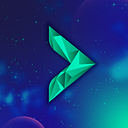Comparing Critical Points In The Evolution Of The Web — Differences and Similarities In The Generations Of The Web
In the immortal words of the Greek philosopher, Heraclitus, “Change is the only constant in life.” A bold claim, but not undebatable. The universe is in a constant state of flux, but that is not the scope of this article. We will focus on one aspect that affects everyday life — the web. Since its invention, the web has rapidly developed and gained mainstream adoption across different industries and classes of users.
The experts split the evolution of the web into three generations, with each one set apart by specific distinctive characteristics. This article explores each generation to compare the differences, similarities, and impacts on the free world.
Web 1.0
Web 1.0, also called the read-only web was the first iteration of the World Wide Web. It was the first time that a global communication network was publicly available. However, there were only a few content creators at this stage, with content consumers forming the majority of users.
Web 1.0 was a content delivery network that enabled the user to showcase the information on a website. It was primarily web pages that hosted information and connected through hyperlinks — a directory that allows users to retrieve a particular piece of information on a website. Personal web pages were standard, and most were static pages hosted on ISP-run web servers or free web hosting services. Web 1.0 did not support any adverts either.
All of these descriptions paint a primitive version of the web that we have today, and that was the truth. However, it was essential to what came next.
Next, we had Web 2.0
Web 2.0
Web 2.0 earned its name as the participative/ social web because of its commitment to user-generated content, usability, and interoperability for end users. Web 2.0 is an enhanced version of Web 1.0.
Here are some of the major features of Web 2.0 -
- It gives you a rich user experience, with dynamic pages where users can participate.
- The use of metadata became prevalent — a simple example of metadata in a document might include a collection of information such as the author, file size, the date the document was created, and keywords to describe the document.
- Other attributes, such as openness, freedom, and collective intelligence through user participation, can also be seen as essential attributes of Web 2.0.
Web 2.0 applications were more interactive with and for the end-user. Its interactive nature also meant more users could find more avenues, online tools, and platforms to share their perspectives, opinions, thoughts, and experiences. Hence, the user is not only a passive consumer; they can also be active participants too.
These interactive tools are used in everyday activities, such as podcasting, blogging, tagging, curating with RSS, social bookmarking, social networking, social media, etc.
Even with all the advancements made from Web 1.0 to 2.0, it still had lapses that inspired the next evolution into the Web 3.0 era.
Web 3.0
The Semantic Web, also known as Web 3.0, is an extension of the World Wide Web through standards set by the World Wide Web Consortium to establish “the world’s information” in a new intuitive model. It is the next evolution of the web, but it focuses mainly on the back-end. This is a considerable contrast to the transition from Web1 to Web2, which was a front-end upgrade. The goal of the Semantic Web is to make internet data machine-readable.
Web3 incorporates concepts of decentralization, AI, ML, 3D graphics, token-based economics, and much more to provide a more intuitive web version. The semantic metadata enables greater connectivity in Web3. By combining these innovations, computers can become more intelligent to fulfill users’ requirements better. They learn to distinguish information like humans to provide faster and more relevant results. Hence, the user experience evolves to another level of connectivity that leverages all the available resources.
Some of these innovations are already deployed in some Web 2.0 platforms. Some examples are seen in 3D and 4D illustrations, play-to-earn video games, or video games hosted on decentralized servers.
Forward Protocol in Web 3.0
The web is one part of technology that has enjoyed the most success recently. We have slowly relinquished control of the decentralized web prototype to a monopolistic market model. However, developers have also been working on a better model. Initially, they tried to decentralize their apps to the maximum extent possible. However, experience has shown that it may be too idealistic for many reasons.
- An obvious scalability issue with present-day blockchains
- Lack of expertise
- Limited knowledge and experience
- Time and cost commitment required to implement
Forward Protocol presents an alternative to understand the differences and lead the transition to the next stage of web evolution. While Web 1.0 served its purpose, it gradually made way for Web 2.0 even though some Web 1.0 websites are still operational today.
It looks like “Web3 apps” will still use Web2 infrastructure for much of its functionality for a while to come. Much of this will be accomplished with apps gaining access to a Web3 backend, which allows for decentralization and a more immersive user experience. The content becomes ubiquitous and is accessible by multiple applications, with every device connected to the web, allowing you to move seamlessly between your devices.
A lot of speculation still exists about the future, but Forward Protocol is here to help you understand it, find your place, and leverage it to your advantage.
